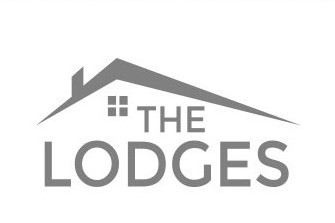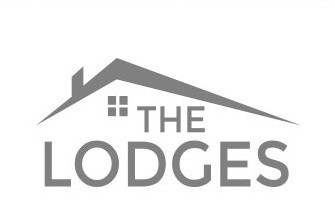Information
-
Report Number: /
-
Client / Site
-
Conducted on
-
Prepared by
-
Location
POLICY ARRANGEMENTS
Food policy statements
-
Food Safety Policy documentation available, signed & dated
-
Do staff work to set instructions to ensure safe and consistent practices?
-
Documentation brought to the attention of staff
Organisation
-
Organisational structure in place
HACCP Principles
-
Are all identified hazards analysed and reduced?
-
Are all Critical Control Points identified within each process?
-
Are critical limits set for temperatures, cooking, cooling, service times etc.?
-
Are systems in place to monitor the Critical Control Points ( CCP)?
-
Are corrective action measures in place should a CCP fail?
-
Are verification steps and monitoring in place to ensure the HACCP system is operating effectively?
-
Are documents and records in place to demonstrate that a HACCP Plan is in place which covers each area of the food chain process?
FOOD DELIVERY & STORGE
Delivery
-
Only authorized suppliers, known to the business are used?
-
Chilled food is delivered direct from suppliers chillers and refrigerated immediately ?
-
Frozen food is delivered direct from suppliers and placed in freezers immediately?
-
Condition of delivery vehicles & drivers checked & recorded?
-
Date coding & food quality is checked to ensure product is still within health guidelines?
-
Abused or damaged goods are rejected?
Storage
-
Chilled/ frozen food is stored without delay?
-
Store room is kept in a clean & tidy condition?
-
Food stored on suitable racking off the floor (6")?
-
Fabric & condition of store rooms acceptable?
-
All food products are protected from sources of Biological , chemical and physical Hazards and Allergens?
Refrigerated / Freezer Storage
-
High risk chilled food stored @ or below +5 deg C
-
Frozen food storage @ -18 deg C or colder
-
Use by date codes are transferred to decanted containers or separated goods?
-
Refrigerated & Frozen Food is all stored in enclosed containers?
-
In multi-use refrigerators are raw & cooked products separated to avoid the risk of cross contamination?
-
Are egg stocks stored under refrigerated conditions?
-
Refrigerators are suitably stocked?
-
Stock rotation FIFO method is being observed?
-
Food containers are sanitised before use?
-
All opened food in cold storage are wrapped and dated?
-
Supplies in cold store are all within use by dates?
Ambient Storage
-
Storage temperature is appropriate?
-
Is storage area well lit?
-
All dried goods are in sealed packages or containers?
-
Any opened packaging is decanted into lidded containers?
-
Food is stored separately from chemicals?
-
Date codes transferred to decanted food?
-
Stock rotation is being observed?
-
Stocks are all within best before dates?
-
Shelving is of suitable type and height to allow clear vision and ease of cleaning around and underneath?
-
Shelving is clean, tidy, arranged well and dust free?
Sanitisation
-
Adequate supplies of sanitiser available & used
-
Chopping boards, knives, slicers, etc, sanitised / washed after use
-
Detergent sanitiser used in dishwasher or correct manual washing methods used
-
Vegetables are washed in separate area?
Initial Food Preparation
-
Raw food and cooked food preparation areas are separate?
-
Utensils and equipment are cleaned and sanitized before they are used in a different area?
-
Disposable towels are used to wipe down food surfaces?
-
Frozen food defrosted under refrigerated conditions or approved cold water method?
-
Cold food refrigerated between preparation & service?
-
High risk foods kept out of fridge for minimal periods during preparation?
-
All food is prepared with minimum delays in accordance to HACCP Plan SOP 013?
Pre-cooking, Reheating & cooling
-
Pre-cooking is only carried out when it is essential for the service?
-
If hot food has to be pre-cooked are suitable control measures in place & strictly followed?
-
Hot food is reheated to temperatures exceeding 75 deg C?
-
Blast chiller is available?
-
If no blast chiller is available, are hot foods cooled to + 20 deg C within 2 hours and then further chilled to below +10 within 4 hours?
-
Blast chiller temperatures / cooling times - records available & completed?
Cold Food
-
Cold food on display is kept below +5 deg C ?
-
Leftover food from display held above +8 deg C for more than 2 hours is disposed of?
-
Buffets are out for a Maximum time of 4 hours?
Hot Food
-
All high risk food cooked to a core temperature of @ least 75 deg C?
-
Hot food display temperature kept above 63 deg C?
Temperature Monitoring Procedures
-
Probe wipes are used
-
Fridge & freezer temperatures
-
Monitoring is carried out in line with company procedures (or at least twice a day)
-
Probe calibration checks recorded
-
Action taken for unsatisfactory product temperatures
Temperature Records
-
All refrigerators
-
All freezers
-
High risk hot food core temperatures
-
Cold food display / salad service units (if applicable)
-
Hot food display/ service units (if applicable)
-
Monitoring Records kept for at least 3 months
Food Service
-
Delays between preparation & service kept to a minimum
-
Cold food refrigerated between preparation & service
-
Food covered where possible
-
Display / service units cleaned & sanitized after use
-
If no blast chiller available, is action taken to chill food as quickly as possible & used within 24 hours
-
Glass breakage procedures understood & operated
Physical contaminates
-
Staff are aware of risks of Physical contamination. (Loose fittings, nuts, bolts, screws, drawing pins, etc are away from food preparation areas).
-
Notice boards positioned away from food preparation areas
-
Outer packaging kept away from food preparation surfaces?
-
Cloths & tea towels in good condition? (not frayed)
-
Wooden spoons and wooden handled equipment all in good condition?
-
System for actioning urgent defects in place
- Yes
- No
- N/A
Complaints procedure
-
Complaints procedure understood & followed by staff?
-
Customer comments book available?
-
Suitable replies and actions taken to address customers comments ?
Personal Hygiene Standards
-
All food handlers issued and trained in good hygiene guidance
-
Finger nails are short, unpolished & clean
-
Good personal hygiene practices being followed (seen @ time of inspection)
-
Staff are aware that coughing / sneezing over food is unacceptable?
-
Staff only eat or drink in food rooms.
-
Staff are aware that they are not to touch their hair or face /nose whilst preparing food?
-
Staff wear clean protective over-clothing?
-
Staff understand they do not wear PPE/ over-clothing outside work?
-
Personal clothing stored appropriately
-
Suitable head covering provided & worn for all working within the food preparation area & food rooms
-
Long hair properly tied back, including waiting staff
-
Did staff wash their hands between tasks (handling raw meat, seafood,, mops, garbage, etc).
-
Do staff wash their hands properly (hands are washed or gloves are changed at critical points)
-
"Wash you hands now" notices displayed in WC areas
-
Bacterial soap provided at all wash hand basins
-
Disposable paper towels provided & used to dry hands
-
Only approved jewellery worn
Smoking
-
Suitable external segregated smoking areas provided
-
Smoking legislation is adhered to ?
Staff illness & Injuries
-
Management fully aware of procedures to follow in the event of staff illness
-
Catering staff fully aware of procedures to follow in the event of illness
-
Return to work sickness forms / questionnaires completed
-
Open sores, cuts, or splints & bandages on hands are completely covered while handling food.
Maintenance & Pest Control
-
All pest sign is reported immediately?
-
Pest monitoring is carried out and records kept?
-
Suitable preventive measures in place for controlling pests & vermin, including clean areas externally, adequate proofing, sound structures, etc
-
Un-screened windows / doors kept closed
-
No active infestation noted
Food Hygiene training
-
Managers & all food handling staff fully trained in appropriate safety & hygiene requirements
-
Details recorded on personal training files
-
Photocopies of certificates, etc available & held on file
Food Safety Policy Training
-
Managers and all food handling staff fully trained & details recorded on training forms, etc
-
Photocopies of certificates, etc available & held on file
-
Available for each member of staff
-
Completed, dated, signed & up to date
-
Food hygiene training given during induction
Cleaning schedule, etc
-
Cleaning schedule on display & implemented
-
Schedule monitored daily & checks recorded
-
Deep cleaning records retained
-
Cleaning equipment colour coded
Refrigeration & Maintenance Records
-
Refrigeration maintenance contract in place
-
Records of call outs / actions retained
-
Dishwasher maintenance
-
Cooking oil stored in bundled area
-
Waste oil disposed of appropriately
-
Out of date or unfit food appropriately disposed
-
Glass breakage procedure in place & operated
Sanitary Provision
-
Provision of adequate facilities for staff
-
Provision of adequate facilities for others
-
Clean
-
Provision of suitable washing / drying facilities
-
Hot & cold running water
Walls
-
Smooth, impervious, non flaking
-
Light coloured
-
Capable of being easily cleaned
-
Undamaged
Ceilings
-
Smooth, impervious, non flaking
-
Fire resistant
-
Light coloured
-
Coved at wall joints
-
Capable of being thoroughly cleaned
Flooring
-
Non-absorbent
-
Anti-slip
-
Without crevices
-
Capable of being thoroughly cleaned
-
Resistant to acids, grease, salts, etc
-
Trapped drain gullies provided
-
Sufficient gradient for drain off (1 in 60 minimum)
Additional Observations
-
undefined
Supplementary Recomendations
-
undefined







